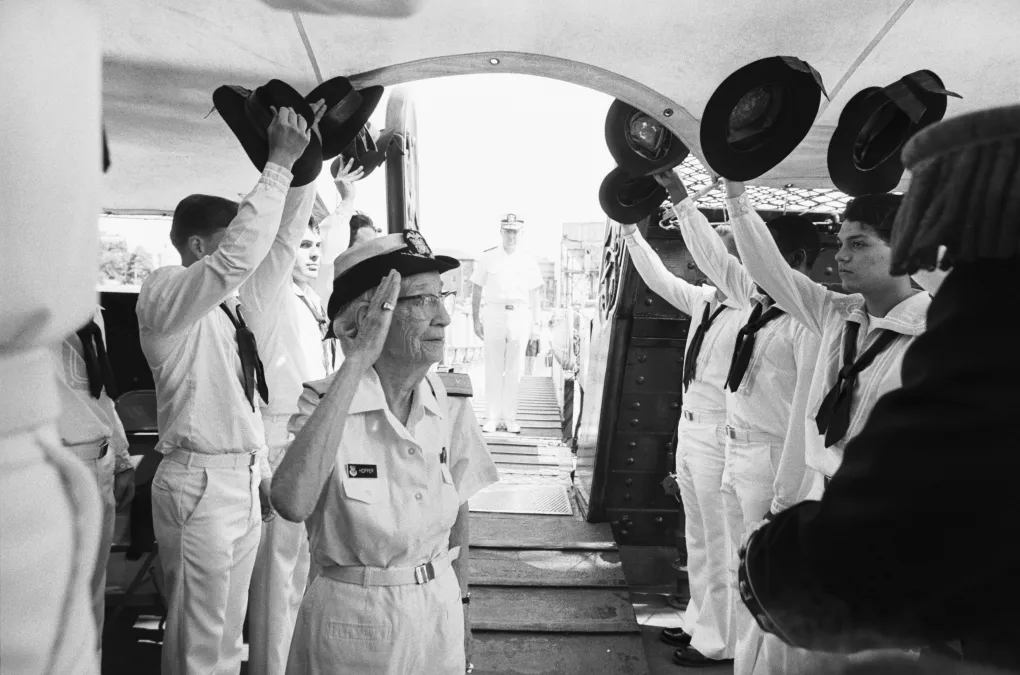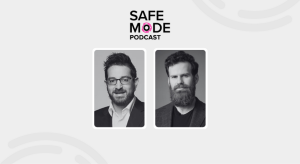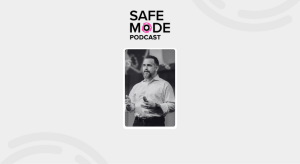
The U.S. government has to figure out what to do with all the data it wants to collect. Younger people’s engrained ability to harness a new wave of technology should be incorporated into an organization’s mission. Both the public and private sector need to make vast improvements to their cybersecurity posture.
All of those sentiments ring true in 2024. Yet, they were all expressed 42 years ago by one of the country’s foremost computer science experts in a speech at the National Security Agency.
That speech is now viewable on YouTube, thanks to a fulfilled records request from the nonprofit MuckRock Foundation and some technical work from the National Archives.
The lecture from Rear Adm. Grace Hopper, “Future Possibilities: Data, Hardware, Software, and People,“ hits on several topics that can still resonate with anyone interested in technology. Here are some of the highlights from the two-part, 90-minute video.
Part One:
8:22: “There are two things that are dead sure, I don’t even have to call them predictions. One is that the amount of data and the amount of information will continue to increase, and it’s more than linear. And the other is the demand for instant access to that information will increase. And those two are in conflict. We’ve got to know something about the value of the information being processed.”
Hopper was right — that certainly was a dead-on forecast. That fundamental truth hasn’t changed much in four decades that have passed since she said this.
17:54: “I thought you might like to know that the first computer bug is still in existence. We were building Mark II in the summer of 1945. It was a hot summer in Cambridge [Massachusetts], and naturally, since it was World War II, we were working in a World War I temporary building. Air conditioning wasn’t very good, no [window] screens and Mark II stopped. We finally located the failing relay. It was one of the big signal relays, and inside the relay, beaten to death by the relay contacts, was a moth. So the operator got a pair of tweezers and very carefully fished the moth out of the relay, put it in the log book, put Scotch tape over it and below it wrote ‘first actual bug found.’ I know you’ll be glad to know that the bug is still in the log book under the Scotch tape. It’s in the museum at the Naval Surface Weapons Center in Dahlgren, Virginia.”
Here’s the photo:
Part 2
4:09: ”So far, we are doing very, very badly on the score of security. We’re doing a very poor job. Not only in government, but in industry, at protecting valuable information and protecting against fraud and theft. I think, mostly, people forget how many reasons there are for security. First, of course, as national security, but we’ll leave that to you and the Department of Defense. There is company security, companies’ confidential information, that has to be protected. You realize there have already been cases where companies have listened to each other’s microwaves when they were bidding competitively on projects? That’s not only not very nice; it’s illegal. Then there’s the question of personal security. You realize there have already been cases where people access personal information and use it to blackmail people? That is also illegal. This fraud and theft, regrettably, it’s increasing.”
Time is a flat circle.
6:47: “Then there was a case, it was in the Washington and New York papers. Canada Cement Lafarge found that someone was not only using their computer, but wiping out their data. So they called in the Royal Canadian Mounted Police in Canada, and the calls were traced to the border. They called in the FBI and Mother Bell, and the calls were traced to the Dalton School in New York. The offenders turned out to be four 12-year old boys. So I said to the FBI, ‘Well, what are you going to do with all these youngsters?’ And they muttered about juvenile delinquents. I said, ‘Oh, don’t do that. Make them work for us. They might be able to make the worldwide military command and control system work.”
That last part sounds familiar.
The entire lecture is a worthwhile watch. Check it out on the NSA’s YouTube channel.





